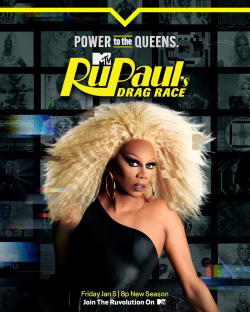When “RuPaul’s Drag Race Global All Stars” was announced, I was super excited to witness the talents of the drag queens from all around the world. Anticipation was high among drag race fans, which quickly led to some disappointment when the season began to air.
The season broke away from the traditional All Stars format. Instead of the challenge winner eliminating one of the queens in the bottom, in Global All Stars, the bottom two of each challenge would lip sync to save themselves from elimination.
This format change was a nice change of pace from other All Star seasons.
It led to the queens really fighting to stay in the competition, which made for some amazing lip syncs. In fact, this season had two of my favorite lip sync performances on the show of all time, which were to the songs “Mah Nah Mah Nah” from “The Muppets” and “I Drove All Night” by Celine Dion.
Before I watched the season, I was a little worried that there might be some favoritism from the judging panel for the three performers who were judged by RuPaul in the past. Kween Kong, Kitty Scott Claus and Alyssa Edwards from “Drag Race Down Under,” “Drag Race UK” and “America’s Drag Race,” respectively, were all judged by RuPaul in the past. In fact, the judges loved each of those queens on their season, with both Kong and Scott Claus making the final three of their seasons, while Edwards made top five, just barely missing the finale when she was eliminated by Detox on “All Stars 2.”
Well, as I ended up watching the season, my worries were realized, and the three English-speaking queens were heavily favored. Kong, Scott Claus and Edwards were placed in the top or were called safe often, when they could have been in the bottom.
While those three were being favored, much of the rest of the cast was pushed aside and weren’t taken seriously.
Gala Varo from Mexico, Miranda Lebrão from Brazil and Eva Le Queen from the Philippines were never rewarded when they did well in the challenges. The only three international queens to win a challenge were Vanity Vain from Sweden, who would end up being placed in the bottom four times throughout the rest of the season; Pythia from Canada, who was doing very well until she was eliminated after her first time in the bottom; and Tessa Testicle from Germany, who was placed in the low position unfairly three episodes in a row, leading to her elimination.
Even the queens who were rewarded for their performances still were cast aside to highlight the three English speakers of the cast. By the end of the season, the three queens who were previously judged by RuPaul ended up winning eight of 12 challenges throughout the season. Balancing the wins out would have made a much more satisfying season.
The one non-native English speaker of the cast who was consistently highlighted was Nehellenia from Italy. She was named one of the top performers of the week six times but only won one challenge. Each time she almost won, they decided to give the win to one of the three English speaking queens. This built up a nice underdog storyline for Nehellenia that made me think that RuPaul would crown her. Nehellenia had so much fan support, only for RuPaul to just end up crowning Edwards, the American contestant. This ending was a disappointing ending to a disappointing season.
The season wasn’t all bad, as the audiences got to celebrate and appreciate the talents of drag queens from all around the world, which is always a good thing. The show was made to celebrate global queer art, which is also always good. I wish that more fans would look at the season through that lens and appreciate that the season even happened because with the negative reviews the season received – including this one – it’s unlikely we will ever get a second season.









Lainey • Mar 28, 2025 at 9:30 pm
Actually, Canadians are predominantly “English speaking” and not sure which series you watched, but every one of those Queens spoke perfect English. If a cat made it to the finale, people would write about Ru being prejudiced against dogs. Sadly, it’s not as competitive as a youth soccer where they battle it out without keeping score and then all walk away with an equal prize of the coveted “Participation” trophy